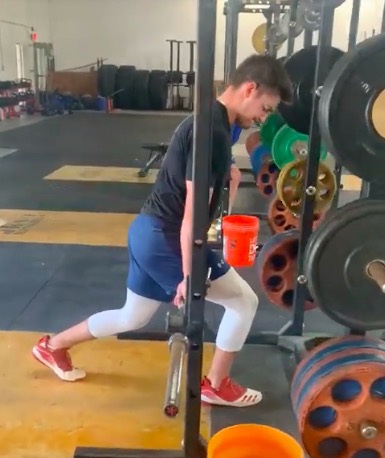This is one of my favorite bodyweight drills for improving overall athleticism.

WHY DO BODYWEIGHT ISOMETRIC SPLIT SQUATS?
The bodyweight isometric split squat works by having the athlete overcome isometrics. In other words you might be pulling or pushing against an immobile force. These are really effective in building strength by working to:
- Recruit maximal motor units within the body
- Increase tendon stiffness
- Increase compensation when applying it within dynamic movement
I have my athletes do all kinds of split squat variations but this one is really great leading up to the new season or towards the end of the off season training. You can also use different types of bars against a strong opposing force. In this workout we’re using a light barbell against a squat rack (you can watch here). You can also use a trap or hex bar as an alternative.
How to do bodyweight isometric split squats?
Begin by setting up pins on your squat rack about a foot to a foot and a half off the floor. Set up a barbell or even light barbell just below the pins. Then get into your split squat stance with one foot in front of the bar and the other behind it. Lunge down to grab the bar and resume your split squat position. You should be slightly hinged forward at the waist here with the spine tall and the bar just below your front hamstring. Begin to pull up against the pins creating your own resistance with bodyweight. Hold this isometric position for at least 30 seconds on each side for a few sets.
Here’s another variation of isometric split squat if you don’t have a barbell…
Programming
These are great to throw into your workout after a sprint warm-up and before your heavy lifting to recruit maximal motor units and have enough energy to perform with quality form.
Train this drill for about 3-5 sets of 30 second reps.
Training Athletic Potential
Looking to add a new level to your speed on the field or court? You’re in luck… my best-selling program Athletic Speed System is proven to get you results based off 10 years of training on top of the newest scientific research. We’ll target the 3 major pillars of speed development:
- Relative Force Production
- Acceleration Mechanics
- Maximum Velocity Mechanics